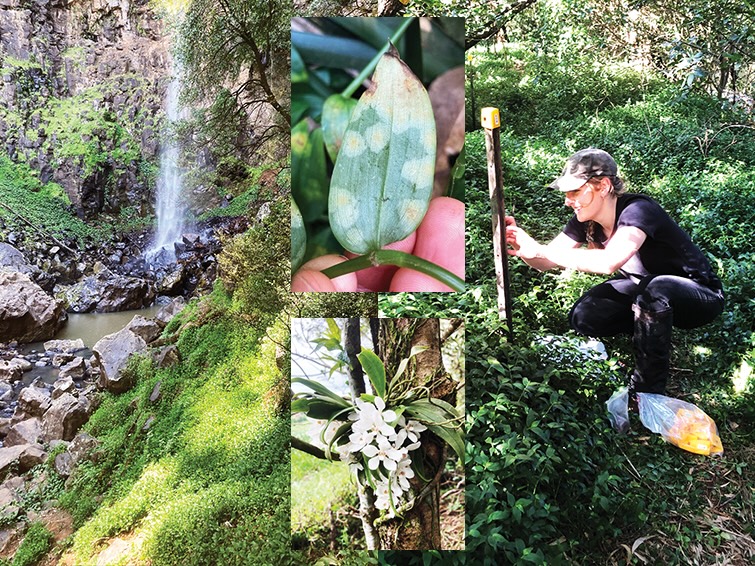E&E PhD Exit Seminar: Evaluating plant-pathogen interactions in classical biological control of weeds: Kordyana brasiliensis released against target weed Tradescantia fluminensis in Australia
Classical weed biocontrol refers to the deliberate introduction of co-evolved host-specific natural enemy of a weed.
Speakers
Event series
Content navigation
Description

Classical weed biocontrol refers to the deliberate introduction of co-evolved host-specific natural enemy of a weed. Tradescantia fluminensis (otherwise known as wandering trad) is a significant invasive environmental weed in New Zealand and Australia where it invades deeply shaded moist forests and riparian ecosystems reducing native vegetation species richness and abundance. Biotrophic leaf pathogen, Kordyana brasiliensis, was introduced into New Zealand in 2018 and Australia in 2019 as a biocontrol agent to assist with the management of this weed. Initial monitoring from New Zealand and Australia reported that K. brasiliensis was able to establish within two-years post-release, however, the impacts of the agent particularly across broad spatial and temporal gradients remains to be evaluated.
This thesis aimed to evaluate the short-term outcomes of the biological control program of T. fluminensis in native forests in eastern Australia using biocontrol agent K. brasiliensis. A large field study was undertaken over 2.5 years using a Before-After experimental design. The first component of the thesis evaluated how different regional and habitat contexts influenced the abundance impact associations of T. fluminensis and native vegetation communities. The biocontrol agent K. brasiliensis was then released and monitored in addition to the target weed and native vegetation communities to evaluate agent establishment, infection dynamics, survival, impact on the target weed populations and finally, whether native vegetation communities changed in response to declines in the target weeds abundance. In addition to the field study, laboratory experiments were also conducted to further understand the biology and life cycle of K. brasiliensis.
This research has identified that in native forests in eastern Australia, native vegetation species richness and abundance is negatively associated with T. fluminensis invasion, and this response is moderated by habitat and community contexts. Kordyana brasiliensis was able to establish across a broad latitudinal gradient in eastern Australia and continued to be detected at all monitored release sites 2.5 years post-release. The level of disease recorded, however, varied significantly across regional and temporal gradients. Using statistical methods, we evaluated how different macroclimate, microclimate and environmental factors influenced disease. Eighteen months post release, T. fluminensis abundance significantly declined in three regions, the magnitude of change varying regionally. Prior to and during the release of K. brasiliensis, Kordyana-like lesions on several native Commelinaceae hosts were encountered. The identity of the specimens was determined using morphological and phylogenetic methods and as a result, propose the description of three new Kordyana species in Australia. This research demonstrates that K. brasiliensis is a highly damaging and host-specific agent for T. fluminensis that can establish and survive across broad temporal and latitudinal gradients in eastern Australia.
Location
Please note: this seminar is only available via Zoom.
Please click the link below to join the webinar:
https://anu.zoom.us/j/83898962178?pwd=DTGEKhgQFBMx57ZnFH9KAg19QfGYOw.aM-dQhksJow-5rNi
Passcode: 315255
Canberra time: please check your local time & date if you are watching from elsewhere.

